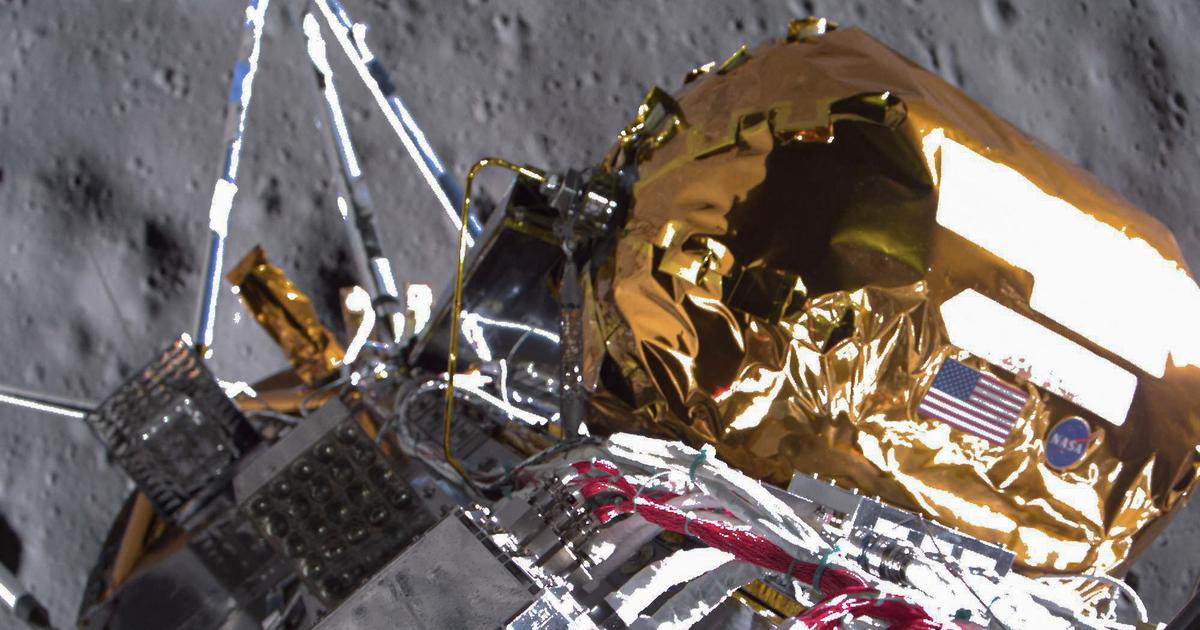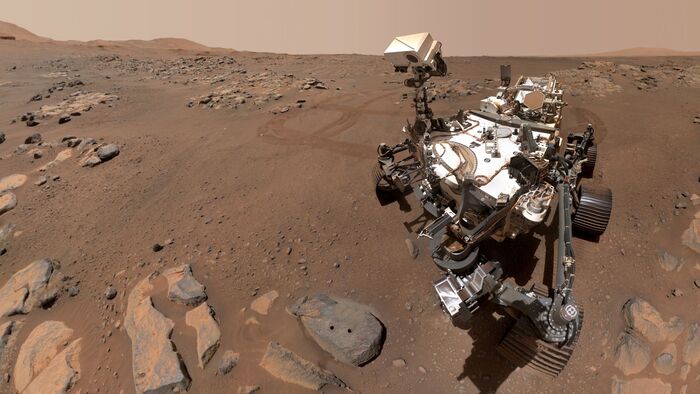Bill Nelson (Miami, United States, 80 years old) is a Democratic senator, astronaut and administrator of the United States space agency (NASA). The American is visiting Madrid because Spain has just become the 25th signatory of the Artemis agreements, the political framework of cooperation that will lay the foundations for peaceful space exploration of the Moon and other space bodies in the coming decades. After meeting with the President of the Government, Pedro Sánchez, in La Moncloa, and signing the document there together with the Minister of Science, Diana Morant, Nelson offered a joint interview to EL PAÍS and El Mundo at the US Embassy.
Question. What are the Artemis agreements and how will they benefit Spain?
Answer. They are common sense principles, such as peaceful operation in space, of helping each other in times of danger and having a unified system, so that if someone has to help other astronauts, the ships have compatible docking systems. It is also ruled out that someone can reach the Moon and claim territory and prevent others from entering. And here I'm thinking about China and what it did in the Spartly Islands, in the China Sea. This territory was in international waters, and China came and claimed them for herself; They started building airstrips. We want to prevent this kind of thing and that is why 25 countries have already signed up and there will probably be many more soon.
More information
China finds a huge water reserve on the Moon
Q. You specifically mentioned China. The country is progressing very fast in space and aspires to be the world's greatest space power by 2045. Who do you think will win this new space race?
A. China has also just announced that it will send astronauts to the Moon in 2030. We are living in a space race. If we are lucky, we will be the first to land on the Moon, in 2025 or 2026. In that crew will be the first woman to set foot on the Moon and the next man. In later missions it will be the four crew members who will step on the surface and stay there for up to 300 days. But there are many things that can be twisted and China may actually be planning to arrive sooner.
Q. Is it possible for them to get ahead of them?
A. I believe the United States will come sooner. What worries me most is that both they and we are going to land at the south pole, where we think there is water. In fact, we are going to send a robotic mission to this area this year and, next year, another that will drill the ground in search of water. We believe that there is because we see that there is ice in the crevices of rocks that are in perpetual shadow. Water is important because it is composed of oxygen and hydrogen with which to make rocket fuel and air to breathe. We want to preserve those potential reserves for the international community, and prevent China from coming along and saying that the water is theirs, as they have done with the Spratly Islands.
NASA Administrator Bill Nelson at the U.S. Embassy in Madrid.
Q. Will these agreements also limit the exploitation of resources by companies?
A. We don't know what resources there are. But I think the important thing is also whether there are resources beyond, on an asteroid, for example. What if there is one of these bodies filled with titanium or precious metals? On the Moon the issue is different. We already went there 50 years ago. Now it's about going to learn how to live, work, invent and manufacture, so that we can send humans to Mars one day. It takes only three or four days to go to our satellite, but going to Mars requires seven, eight months and once you arrive you have to stay on the surface one or two years before the planet re-aligns with Earth and they can return. That is why habitats must be developed. You also have to be able to get there faster. We are researching new propulsion systems for this. So we could make the trip in three months, be on the surface for a week and come back. We think the earliest we can reach Mars in 2040. It seems like a lot, but it's only 17 years old.
Q. A few weeks ago, the Starship rocket that should carry astronauts to the Moon exploded due to a failure Do you think this failure will delay plans to land on the satellite in 2025 or 2026?
A. I hope SpaceX has the ship ready. It's true, they had an explosion, but that's their modus operandi. They have a lot of rockets. The latter they launched rose for several minutes. There were eight engines that did not start and then exploded. They have already learned why and have fixed it for the next release and so they will progress. This is not the way NASA works. We try to be perfect, although we do not always succeed, as witnessed by terrible accidents such as Apollo 1 or the shuttle Challenger, which exploded killing seven crew members, just eight days after I myself returned to Earth from space in 1986. We also lost another crew of seven in the Columbia disaster in 2003. They were human errors that should never have happened. SpaceX, instead, launches rocket after rocket until it works. That's what they did with the Falco 9 reusable rocket, which has been a huge success.
Q. The crew of Artemis 2 is already fixed: three Americans and one Canadian. Is there any chance of there being a European in Artemis 3?
A. I can't tell you if there will be a European in the four-person crew, but only two will step on the moon: a woman and a man. In future missions, the four crew members will step on the Moon.
Q. Is there any specific field in which Spain can make important contributions in the return to the Moon?
A. We already have a crucial contribution, the deep space network and one of its antennas, which is in Madrid. We wouldn't have made it to the moon without her. Now the problem is that there are so many missions that the network is saturated. So much so that during Artemis 1 we had to discard a lot of valuable data that the James Webb Space Telescope was sending back. We are now developing a faster form of communication based not on radio, but on laser light.
The President of the Government, Pedro Sánchez, with Bill Nelson, this Tuesday at a meeting at the Moncloa Palace.BORJA PUIG DE LA BELLACASA (BORJA PUIG DE LA BELLACASA)
Q. What will happen to Russia's collaboration on the International Space Station (ISS)?
A. My forecast is that it will stay until we deorbit the station. I think Russia is compromised because after all we built the station together. The ISS is as big as a football field. It is certain that some part will survive re-entry into the atmosphere, so we want to send it to a cemetery located in the southern Pacific Ocean. We have to be very precise so that it does not cause harm or pose a danger to people. Although for now the Russians have said they will stay until 2028, I think they will continue until 2030, which is the date on which we will bury the station. Just a year ago, the head of the Russian space agency said they were withdrawing immediately. He was fired. The new boss is very professional.
Q. Earlier you mentioned the James Webb telescope, which is NASA's current major astronomical project.
A. We are already planning a new one. But the Webb is so good that it may last 20 more years. So we're going to be able to go to it, refuel it and it can stay in use much longer. Then there will be other telescopes that will help us specifically search for exoplanets with life. In 2028 we will also launch NEO Surveyor. Their goal is to discover an asteroid that could impact Earth causing serious damage, but is too small for us to see with other telescopes. If you remember, the recent DART mission successfully deflected an asteroid. So if we succeed, we can see a killer asteroid coming and deflect it just enough so that it doesn't hit us.
Q. How is NASA facing the threat of climate change?
A. NASA is also a climate agency and we have many satellites studying this aspect. We will soon launch four new satellites that will give us a three-dimensional view of what is happening in the climate on land, seas, ice and atmosphere. And I can't say this word without remembering what I saw from the window of the ship when I went into space. I looked at the edge of the planet and I saw that very thin layer and you realize that it is only that which sustains all living things on the planet. It's very thin and we're carrying it.
Peaceful exploration without space junk
The Artemis agreements lay the foundation for cooperation in future Moon exploration, especially the U.S.-led Artemis project in collaboration with the space agencies of Europe, Canada and Japan to bring the first American woman and first non-white man to the surface of the Moon. in 2025; and building a space station orbiting the Moon. The agreement includes fundamental principles, such as transparency or mutual assistance in case astronauts need rescue.
The original eight signatories to the treaty were the United States, Italy, Canada, Japan, Luxembourg, the United Kingdom, Australia and the United Arab Emirates, in October 2020. Since then, 17 other countries in Africa, America and Asia and Europe, including Spain, have joined.
The Artemis agreements are part of the United Nations space treaty which states, among other things, that no country can claim the nationality of any territory of the Moon or any other celestial body. The document signed today also contemplates sharing the scientific information collected by each country, although it leaves private companies out of this framework, unless they operate on behalf of one of the forming countries. The text contemplates the extraction of natural resources on the Moon and other bodies and the signatories commit to inform the United Nations of their plans.
The Artemis framework also commits signatories to limiting space debris and taking charge of the retirement of satellites and other spacecraft at the end of their useful life.
You can follow MATERIA on Facebook, Twitter and Instagram, or sign up here to receive our weekly newsletter.
75% discount
Subscribe to continue reading
Read without limits
Read more
I'm already a subscriber












